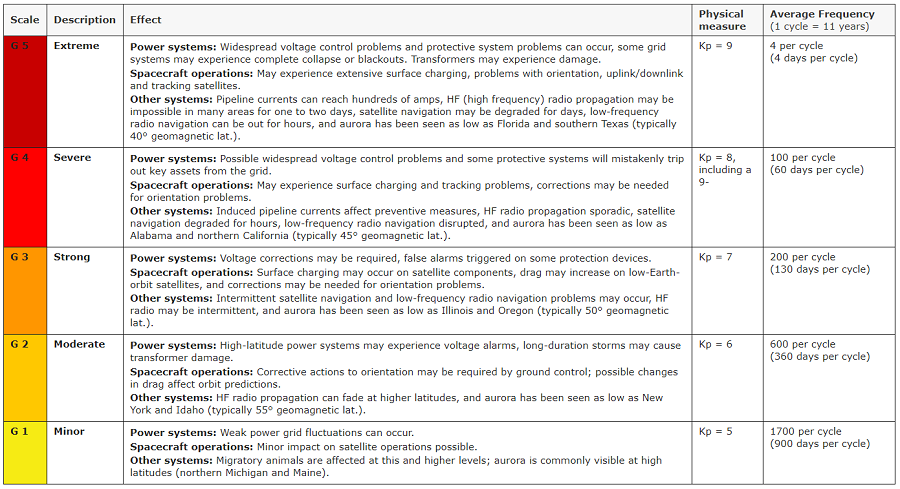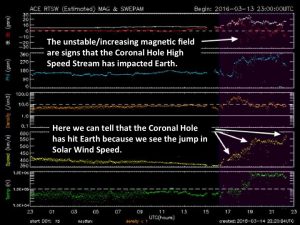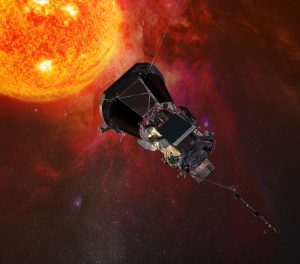According to the National Weather Service’s Space Weather Prediction Center (SWPC), a C3 flare erupted from sunspot region 2859 on the Sun on August 26 and appears to have sent a solar blast towards the Earth. The SPWC, through analysis of available imagery from the SOHO/LASCO instrument, confirmed a partial halo CME took place. In a statement released by the SWPC, analysis and modeling are now underway to determine if there may be any possible geoeffective component to this CME.
It appears this solar explosion set-off a “solar tsunami”. A solar tsunami, also known as a Moreton Wave or a Moreton-Ramsey Wave, is the signature of a large-scale solar corona shock wave generated by solar flares. Initially spotted in the late 1950’s, technology deployed by NASA in 2009 confirmed the presence and the mechanics of such a tsunami.
Unlike a wave of water in the sense of a traditional tsunami, a solar tsunami is a wave of hot plasma and magnetism roughly 62,000 miles tall which races through the solar system at speeds of around 560,000 mph.
“Now we know,” says Joe Gurman of the Solar Physics Laboratory at NASA’s Goddard Space Flight Center. “Solar tsunamis are real.” NASA’s Solar Terrestrial Relations Observatory (STEREO) confirmed the presence of a solar tsunami in 2009. The twin STEREO spacecraft captured the unexpected eruption of sunspot 11012 in February of that year; the blast hurled a billion-ton cloud of gas into space and sent a tsunami racing along the sun’s surface. STEREO recorded the wave from two positions separated by 90 degrees, giving researchers an unprecedented view of the event.
“It was definitely a wave,” says Spiros Patsourakos of George Mason University, lead author of a paper reporting the finding in Astrophysical Journal Letters. “Not a wave of water, but a giant wave of hot plasma and magnetism.”
The technical name is “fast-mode magnetohydrodynamical wave,” or “MHD wave” for short. The one STEREO saw climbed up about 60,000 miles high, raced outward at 560,000 mph, and packed as much energy as 2.4 million megatons of TNT.
And now it appears the CME from region 2859 initiated a similar solar tsunami today.
Scientists are working now to determine what kind, if any, geomagnetic storm will unfold from this solar tsunami. While a an earlier CME impacted the earth early on August 27, setting off a brilliant aurora show at northern latitudes, a more significant event could unfold with this solar tsunami.
Geomagnetic storms are rated on a 1-5 scale, with 1 being the weakest and 5 having the most potential for damage. Even a G1 geomagnetic storm could create issues: there could be weak power grid fluctuations and minor impacts on satellite operations. Aurora, also known as the “Northern Lights”, could be visible at high latitudes from northern Michigan and Maine to points north. Impacts and aurora change as the geomagnetic storm scale increase.

Dark regions on the Sun known as coronal holes are one of the main drivers of space weather now. According to the Space Weather Prediction Center, coronal holes appear as dark regions on the Sun because they are cooler than the surrounding plasma and are open magnetic field lines. The Sun’s outermost part of its atmosphere, which is known as the corona, is where these dark regions appear. The solar corona was also one of the main features of the Sun scientists were most excited to study during the past solar eclipse. You are able to notice these features in extreme ultraviolet (EUV) and soft x-ray solar images.
Solar wind is always flowing from the Sun and towards Earth but coronal holes are known for releasing enhanced solar wind. Coronal holes can develop anywhere on the sun and are more common during solar minimum. One solar rotation of the Sun occurs every 27 days and coronal holes are sometimes able to last several of these. It is common to see persistent coronal holes at the north and south pole of the Sun but sometimes they can expand towards the equator of the Sun resulting in a larger region. Normally, coronal holes located near the Sun’s equator, result in faster solar wind arriving at Earth. It is common to see coronal holes produce G1-G2 geomagnetic storming levels and sometimes on rare occasions, upwards to G3 levels have been met.

NOAA forecasters analyze these features and have to take them into account during each forecast. If Earth is experiencing the effects of a coronal hole and a coronal mass ejection is forecasted to impact Earth, the combined effects could result in a more significant impact and more intense geomagnetic storming. Analyzing data from the DSCOVER and ACE satellite is one way forecasters can tell when the enhanced solar wind from a coronal hole is about to arrive at Earth. A few things they look for in the data to determine when the enhanced solar wind is arriving at Earth:
• Solar wind speed increases
• Temperature increases
• Particle density decreases
• Interplanetary magnetic field (IMF) strength increases
If you are an aurora chaser or space weather enthusiasts, you’ll want to become familiar with coronal holes. They will be providing much of our geomagnetic activity going forward and will remain persistent during solar minimum. Citizen Scientists should explore Aurorasaurus which allows you to share or get alerts and images on aurora activity with a community of others interested in space weather.
While these solar events can help illuminate the sky with stunning aurora, they can also do considerable harm to electronics, electrical grids, and satellite and radio communications.
On September 1-2 in 1859, a powerful geomagnetic storm struck Earth during Solar Cycle 10. A CME hit the Earth and induced the largest geomagnetic storm on record. The storm was so intense it created extremely bright, vivid aurora throughout the planet: people in California thought the sun rose early, people in the northeastern U.S. could read a newspaper at night from the aurora’s bright light, and people as far south as Hawaii and south-central Mexico could see the aurora in the sky.
The event severely damaged the limited electrical and communication lines that existed at that time; telegraph systems around the world failed, with some telegraph operators reporting they received electric shocks.

A June 2013 study by Lloyd’s of London and Atmospheric and Environmental Research (AER) in the U.S. showed that if the Carrington event happened in modern times, damages in the U.S. could exceed $2.6 trillion, roughly 15% of the nation’s annual GDP.
While typically known for their weather forecasts, the National Oceanic and Atmospheric Administration (NOAA) and its National Weather Service (NWS) is also responsible for “space weather.” While there are private companies and other agencies that monitor and forecast space weather, the official source for alerts and warnings of the space environment is the Space Weather Prediction Center (SWPC). The SWPC is located in Boulder, Colorado and is a service center of the NWS, which is part of NOAA. The Space Weather Prediction Center is also one of nine National Centers for Environmental Prediction (NCEP) as they monitor current space weather activity 24/7, 365 days a year.
Pretty much how it’s going. #CoronalHole #GeomagneticStorm #G1 pic.twitter.com/07XnTaK46f
— the Weatherboy (@theWeatherboy) April 30, 2021